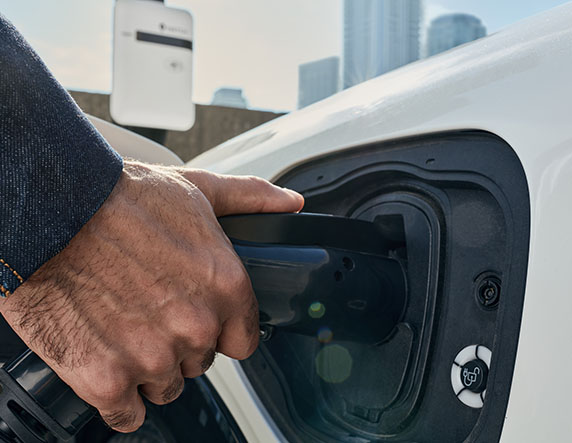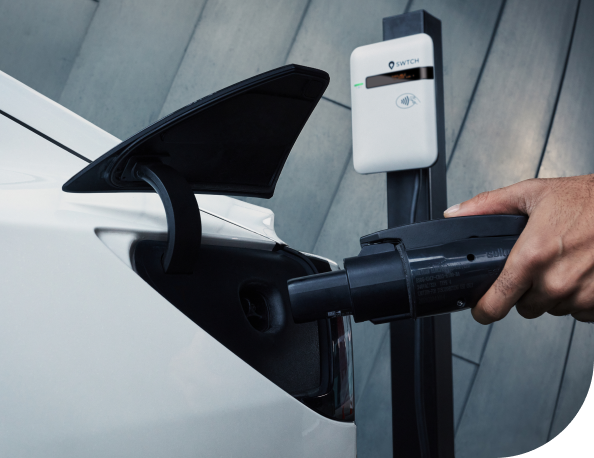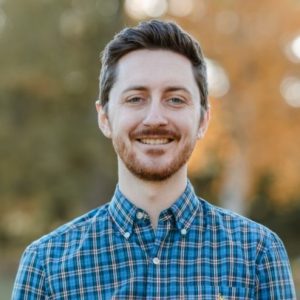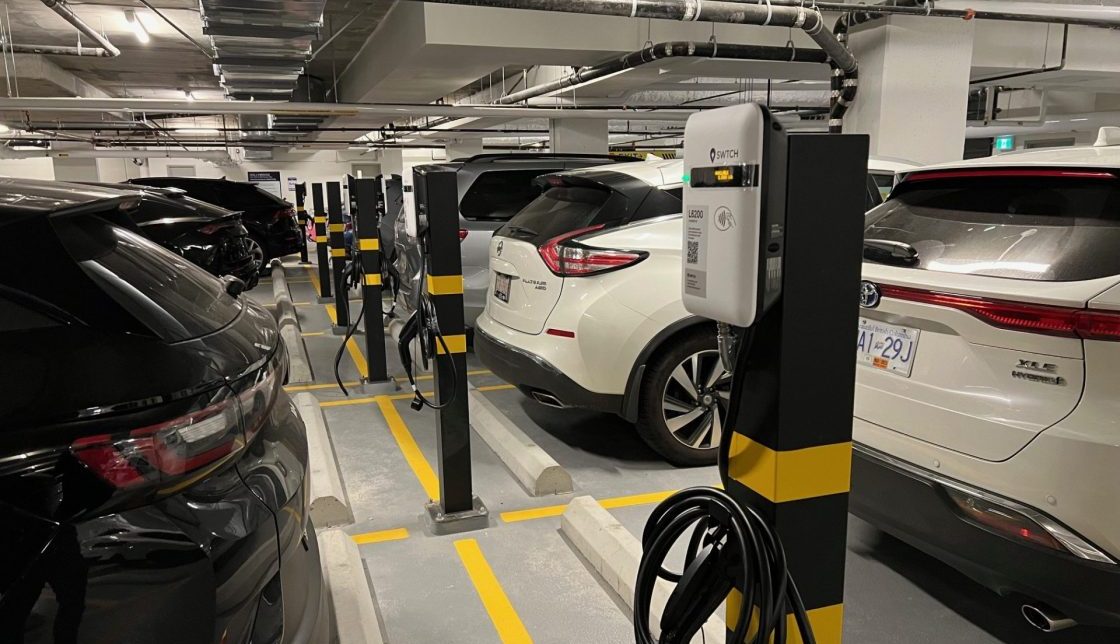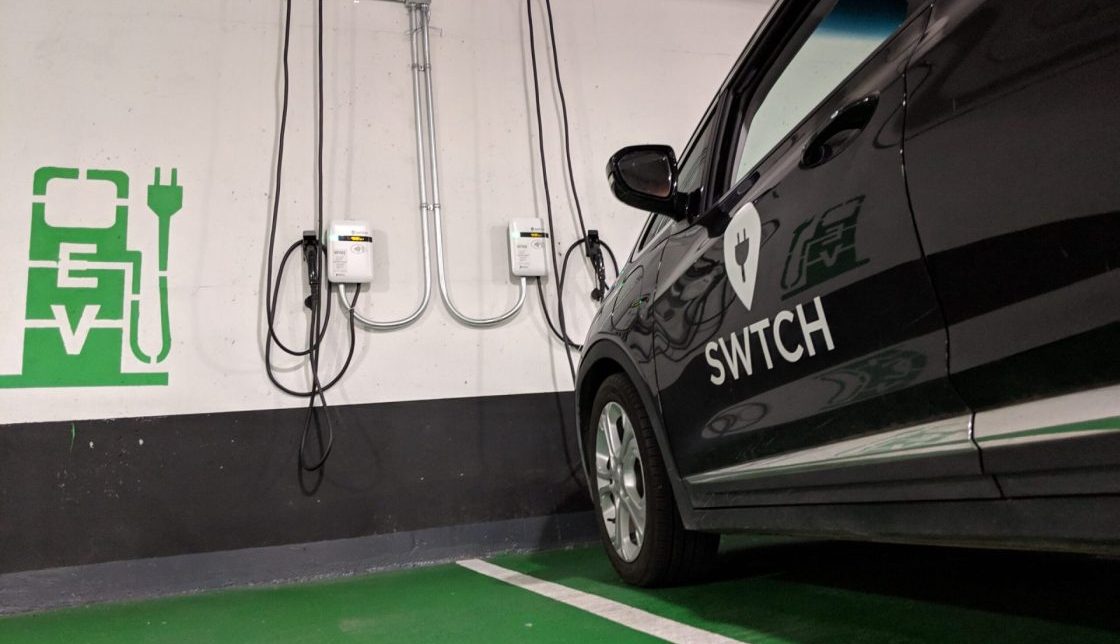Why “smart outlet” EV chargers aren’t a magic solution for multifamily EV charging
In EV charging, and particularly with multifamily EV charging, “smart outlets” are often positioned as a more affordable way to add charging to properties. The pitch is that smart outlets can deliver sufficient charging benefits without the need for expensive equipment installation or infrastructure upgrades.
While there are some smart outlets that do offer a fairly good EV charging experience, there remain some limitations of the technology that can make them a poor substitute for a proper EV charging station.
Here’s what you need to know about smart outlets, their benefits, and why their tradeoffs mean you should think twice before adopting them.
What is a “smart outlet” EV charger?
In the context of EV charging, the idea behind these outlets is that rather than install a full EV charging station, a property can simply install one of these devices, which is simpler and often costs less.
It’s important to note, though, that where EV charging stations come with an attached cable and connector for plugging into a car, smart outlets typically don’t include a means of connecting a vehicle. The expectation is that EV drivers who make use of a smart outlet will bring their own portable chargers for use with the outlet when charging up their vehicles.
The pitch for smart outlet chargers: their hardware is cheap
There’s a price tag associated with installing EV charging stations, and much of the appeal of smart outlet technology is that it’s meant to be a low-cost alternative that puts EV charging comfortably within reach for property owners.
Because smart outlets are just enhanced electrical outlets, they lack built-in charging components—reducing upfront costs and eliminating expenses like replacing damaged charging cables.
This positive is offset by a number of negatives, though, including a worse charging experience, less flexibility in how you can evolve your charging offering, and reduced access to funding programs meant to make EV charging installations more accessible.
The biggest smart plug downside: No charger included
It’s easy for most drivers to use most traditional EV charging stations. They plug in their car, initiate the charging session, and then go about their business.
Smart outlets place a heavier burden on drivers because they require that drivers plug in their own portable EV chargers in order to connect their vehicles. This negatively impacts this offering in two main ways.
The portable chargers required for smart outlets are an added expense
A Level 2 portable charger can cost anywhere from $200 to $500 or more, which is not an insignificant expense to ask drivers to pay in order to plug in.
There are Level 1 portable chargers included with most EVs upon purchase, but these can’t be plugged into Level 2 charging outlets, meaning drivers wouldn’t have the option of simply sticking with their existing, slower chargers—they would have no choice but to purchase the pricier level 2 charger if they wanted to make use of the smart outlet system.
Additionally, though the plugs themselves are likely not going to require substantial maintenance over time, the portable chargers very likely will, particularly as they are unplugged and plugged into the outlet so frequently. Drivers will be on the hook for the maintenance or replacement costs.
Finally, there’s also an increased risk of theft. Most vehicles don’t have a locking mechanism to keep a portable charger connected to their vehicle, meaning there’s little to stop someone from walking up to unplug and steal a portable charger that is in use.
Smart outlets offer a less convenient user experience
A seamless user experience matters, and smart outlets add unnecessary friction compared to EV charging stations.
With a normal EV charging station, the only friction points are in plugging and unplugging the car, as well as in initiating the charging process.
With smart outlets, drivers must:
- Ensure they have their portable charger with them
- Dig it out of their car
- Plug it into the outlet
- Plug it into their car
- Unplug from their car and the outlet at the end of a charging session
None of this is unlivable—many EV drivers happily use portable EV chargers—but given the added steps and responsibility associated with charging via a smart outlet, it’s a worse experience for drivers overall.
Why these downsides matter for property owners
By adopting smart outlets and offloading expense and complexity to EV drivers, property owners run a few risks.
It’s more difficult to manage problems related to charging
When charging issues arise, portable chargers make troubleshooting harder—was it the outlet, the charger, or user error?
Is it a problem with the charger? Is it a problem with the smart outlet? Did the driver simply purchase an incompatible charger? And what happens if the driver forgets their charger and desperately needs to charge?
When drivers have charging issues, they’ll likely turn to your team for help—turning a ‘low-maintenance’ solution into a recurring headache. In contrast, EV charging solutions from companies like SWTCH come with dedicated support that can troubleshoot the entire charging experience, meaning driver issues can usually be handled without your needing to intervene.
Smart outlets make EV charging feel like a less-than-premium amenity
As EV charging becomes a standard amenity, the quality of the charging experience will directly impact user satisfaction.
Added friction and added expense will make a smart outlet charging experience feel substandard as compared to charging with a proper EV charging station. This could lead to reduced satisfaction with your services and even make other properties seem like a better alternative, potentially increasing the turnover rate among those who regularly use EV chargers.
The foundation you lay today could impact your property for years
Today, the added expense and complexity for drivers and the potential for reduced satisfaction with your charging amenity are bad enough. As EVs become more common and EV charging becomes a must-have for more properties, though, these problems will be magnified.
Down the line, if the headaches associated with smart outlets become too much, it will be an expensive and complicated undertaking to rip out the existing outlets, replace them with EV charging stations, and complete the necessary infrastructure adjustments for the change in technology.
By adopting proper EV charging stations today, you’ll be able to avoid this hassle and instead establish a foundation for a quality EV charging experience that drivers can rely on for years to come.
Another downside: Smart outlets’ closed technology limits flexibility and choice
With a full EV charging station, choosing an open solution gives you the flexibility to adapt your setup as needed. If you choose to switch software providers in the future, an open system ensures your equipment remains valuable and adaptable, preventing it from becoming an obsolete asset.
Smart outlets, on the other hand, are generally a more closed solution, and this presents real limitations in how you can evolve your EV charging offering.
In the event that you want or need to migrate away from a smart outlet provider’s software, for instance, the process for doing so will likely be complex or even impossible. This would lead to a requirement that you fully remove your smart outlets and replace them with something else—a time-consuming and expensive proposition you could avoid with chargers based on an open standard.
Particularly given the relatively early stage we’re at in EV charging, it’s a risky proposition to lock into a closed platform—many closed platforms have already closed down, and others are likely to follow in the years to come.
By investing in open hardware and software, such as that offered by SWTCH, you’ll retain more flexibility and choice if you want or need to change providers in the future.
Are smart outlets eligible for incentive and rebate programs? It depends
One of the biggest factors in the final cost of an EV charging installation is whether the project receives funding from federal, state, or local incentive and rebate programs. These programs can cover as much as the entire cost of an EV charging installation, making them extremely important considerations when planning how many EV charging stations to install and what kind of technology to use.
Traditional Level 2 EV charging stations are reliably covered by these programs—the programs, after all, were created largely to facilitate the installation of just this kind of technology.
With smart plugs, there’s less certainty. Some incentive and rebate programs do cover them. Others don’t. And even when they are covered, the funds that they are eligible to receive are often substantially lower than what is available for a level 2 charging station.
What this means is that one of the core benefits of smart outlets—their lower price—is far from guaranteed once funding programs are factored in. Combined with the other shortcomings of the technology, this makes them less attractive as an option for properties seeking to install and operate a large number of charging stations that drivers will love.
Though smart outlets are a reasonable low-cost option for EV charging, the drawbacks to the charging experience, their closed technology, and their patchy funding coverage make them a mixed bag.
If you only need a small number of EV chargers and cost is the absolute most important factor, smart outlets could be a good solution for you. But by choosing a fully-featured EV charging solution instead, you’ll gain the best charging experience for drivers, the best technology for advanced load management, and the best odds of receiving substantial funding to drive the cost of your installation way down.
Want to learn what the best charging technologies are for your property?
Get in touch with our team! We’ll be happy to help find the right technology, maximize funding opportunities, and future-proof your setup.
